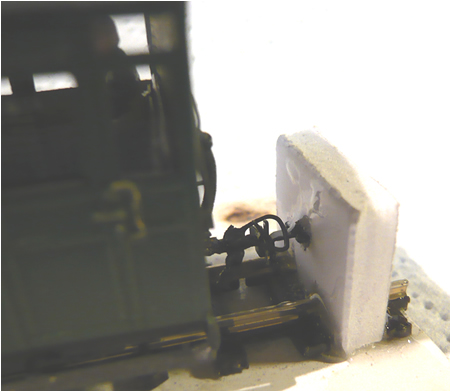|
how to get reliable remote uncoupling
We use Greenwich couplings. It is important
to ensure that coupling height is accurately set. We use a section of
track with a 'buffer stop' with a coupling mounted at the correct height.

First of all, we installed permanent magnets
at strategic positions. They were usually OK but we needed to be exactly
over the magnet to get them to work and that is easier said than done.
Then again, the stock uncoupled as often when not required as when we did!
County Gate quickly became populated with unnoticed stock which had
detached from consists. Apart from a four year old who thought this was
really funny, the rest of us had had enough.
The next attempt was using Peco
electromagnets. Naively, I thought, they are Peco.....they must work.
Stupidly I fitted the lot before finding that they could not pull off the
skin of a rice pudding. We now have electromagnets supplied by Wizard
Models which we have quickly nicknamed the 'black holes'. Despite their
apparent strength, these magnets were still inadequate to operate the
Greenwich couplers as they had been built.

Greenwich coupling etch
With the permanent magnets the couplings
operated when the lever arm was cut at position '1' and 8 turns of iron
wire wrapped around it. Our trains are largely held in fixed consists so
it has never been necessary to have every coupling operate. Where needed,
we now use 16 turns of iron wire. Care is needed
to ensure that the coupling does not foul any part of the vehicle.
With this mod in place, they will
uncouple even if you have not quite parked right over them and again all
is well with the world. We have used independent 12V DC power supplies
with these as it would be folly to introduce the power drop to
electronics.
For places where we need to uncouple at
exhibitions, (for us the coal train at the harbour) we have found that it
is still very difficult to stop the train at exactly the right spot every
time. There would then be a shunt back and forth until the correct
position was obtained.
Our solution is not for all because it
requires the locos to be of the same length. For us, not a problem as our
Garratt rules goods trains on the branch line. I decided that a physical
stop would be best and employed a Tortoise motor to do just that. Now, one
runs the train very slowly up to the Tortoise wire and we uncouple every
time.



|